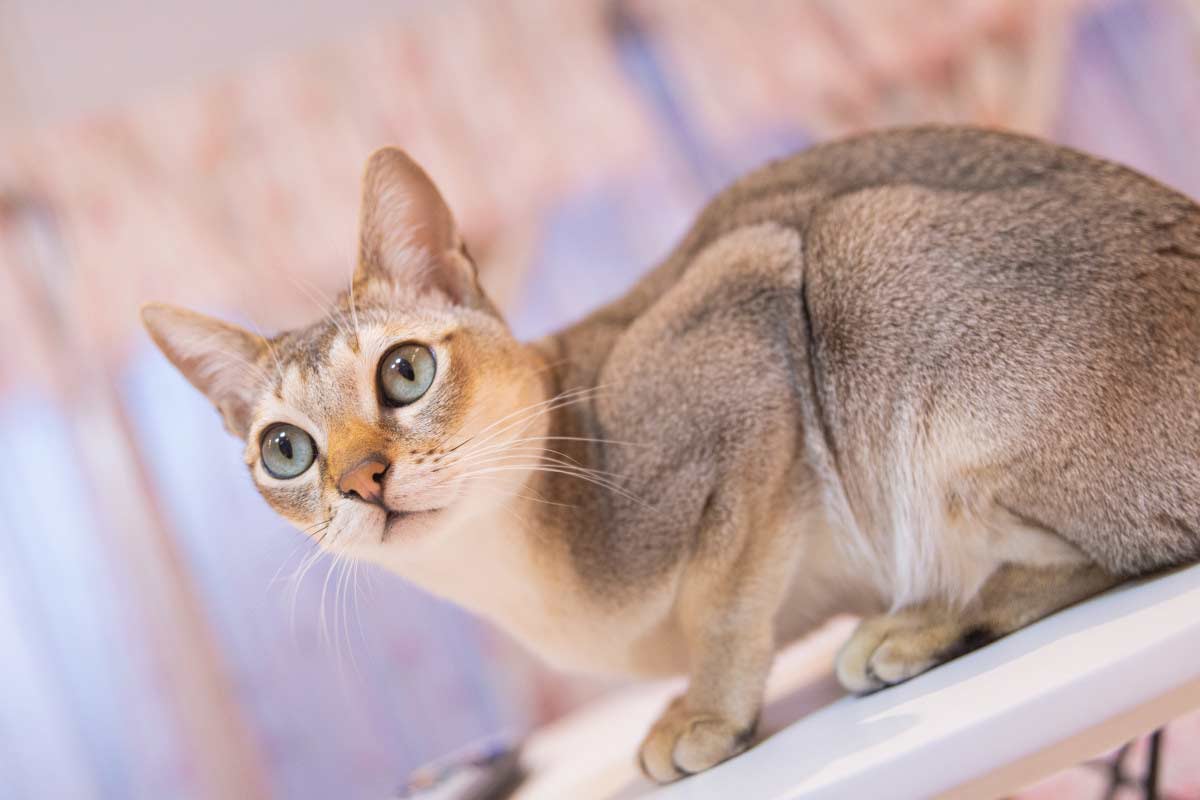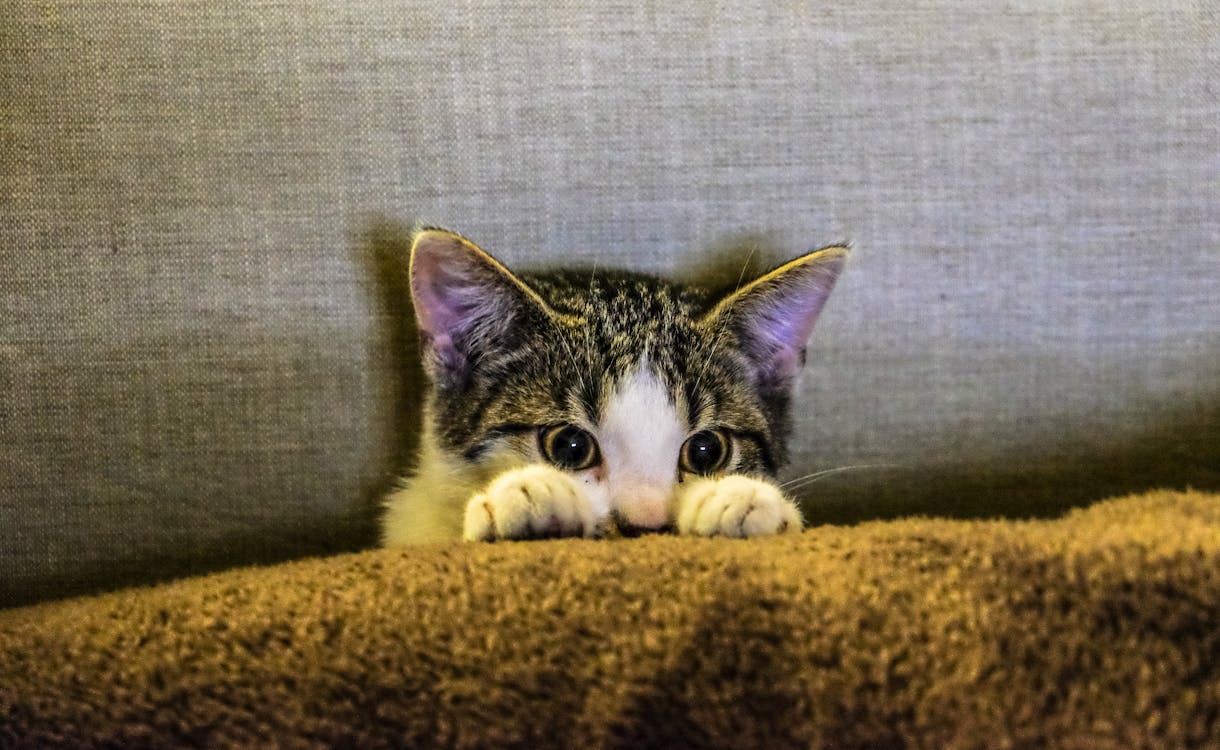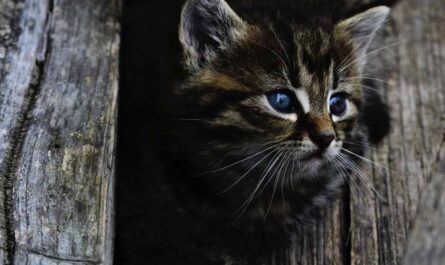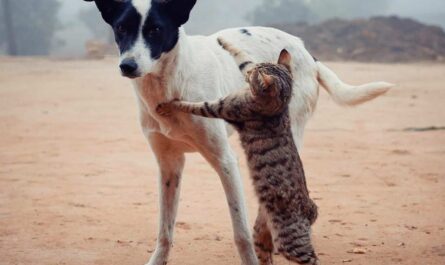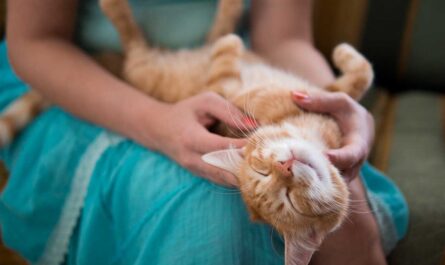Petting a scared cat: what are some important tips to follow? When envisioning the delightful prospect of adopting a cat, one might have conjured idyllic images of tranquil moments, shared on the couch, filled with the harmonious symphony of purrs and gentle caresses. The stark reality, however, often unveils itself through encounters with scratches, scaredy cats, tail swishes, and occasional nips—leaving cat owners pondering the enigma of feline affection. Unraveling this mystery involves delving into the intricate tapestry of a cat’s past, genetics, and individual predispositions.
Cats, those enigmatic creatures of feline grace, have specific preferences when it comes to receiving affectionate gestures. Their favored regions for caresses include the head, neck, and behind the ears. The subtle art of cat petting involves gentle scratches in these areas, a tactile symphony that often induces purrs of contentment. For a more extended session, exploring the back of their body with languid strokes can be appreciated. However, a word of caution – certain territories are strictly off-limits.
Not All Felines Crave Affection
The inclination towards or aversion to affection is intricately woven into a cat’s early experiences. Socialization and handling during kittenhood play a pivotal role. Unveiling your cat’s history becomes a compass guiding your understanding—did they revel in positive handling or face trepidation within shelter walls? Genetic factors, too, exert influence, with timid mothers possibly bequeathing their shyness to their offspring. Patience becomes paramount, for a scaredy cat, especially when adopting a shy cat, as studies suggest that the temperament of bold fathers can resonate in their kittens.
DO: Delve into your cat’s history to gauge their likelihood of enjoying petting. Bold parental lineage may signify an outgoing feline companion.
DON’T: Assume uniformity in feline personalities; each cat possesses unique affinities towards affection.
Dynamics of Feline Moods and Changing Needs
The intricate dance of a cat’s behavior is choreographed by a medley of genetic predispositions, past encounters, and present circumstances. Mishandling during petting can etch fear into a cat’s psyche, fostering aversion. Gentle handling, a key choreography move, aids in avoiding discordant notes in the feline-human duet. Feline moods, akin to the ever-changing hues of a kaleidoscope, may dictate moments of solitude over affection. Environmental factors, hunger, illness, or sheer exhaustion may orchestrate variations in a cat’s behavior.
DO: Attune yourself to your cat’s ever-shifting mood and address their immediate needs, be it playtime or solitude.
DON’T: Compel affection upon a cat displaying reluctance, as this may sow the seeds of fear in future interactions.
Navigating the Feline Landscape: Where to Pet Your Cat
Contrary to misconceptions, not all felines relish affection in the same manner. The landscape of a cat’s preferences unfolds in regions beneath the chin, around the ears, and occasionally the crown of the head. Stray into forbidden territory, such as the belly, and risk facing bites and swipes. The analogy with dogs falls short; cats, discerning in their preferences, favor selective spots for scratches and gentle strokes. Understanding your cat’s comfort zone in terms of being held—be it briefly, reluctantly, or with open arms—forms the cornerstone of a harmonious feline-human relationship.
DO: Explore the sweet spots for scratches, respect your cat’s boundaries, and recognize their unique preferences.
DON’T: Presume universal preferences; each cat is a connoisseur of personalized affection.
Decoding Feline Communication: Listen to Your Cat’s Body Language
The cryptic language of feline communication extends beyond mere meows and purrs. Lengthy cuddle sessions or succinct, cordial pats cater to individual feline whims. Deciphering your cat’s body language—be it the flick of a tail or subtle shifts in posture—acts as a compass guiding your interactions. A stiffened body or a twitching tail signals that the feline desires respite. This nuanced understanding, devoid of assumptions, nurtures mutual trust and reinforces the unique bond between felines and humans.
DO: Offer affection within the comfort parameters of your cat, observing signs of contentment and cessation.
DON’T: Equate aloofness with negativity; embrace the diversity of feline temperaments, acknowledging the varying timelines for forging connections.
Red Flags: Seeking Professional Insight
In the intricate dance of petting sessions, a sudden deviation in your cat’s behavior—signaled by pain, agitation, or avoidance—demands a vigilant eye. This is not mere capriciousness; it may signal an underlying issue requiring professional intervention. If the harmonious melody of affection takes an unforeseen dissonant turn, reaching out to your veterinarian becomes the prudent course.
In the enigmatic realm of feline affection, decoding the nuances demands not only a keen eye but also a patient heart—one that recognizes the diversity inherent in these captivating and independent creatures.
How does a cat like to be petted?
Approaching a cat for a petting session is akin to navigating the delicate intricacies of a secret garden. A slow and thoughtful approach is paramount. Observing the nuanced language of a cat’s body is essential. As your hand extends, watch for signs of agitation or restlessness. Cease your affections before the feline companion contemplates evasion. Opt for gentle head and neck scratches, avoiding any attempts to force interaction by cornering the cat. The forbidden realms of belly rubs are to be approached with utmost trepidation, as tight squeezes are decidedly unwelcome.
How do you get a cat to let you pet?
The symphony of cat-petting etiquette requires a nuanced understanding of the cat’s boundaries. The overture involves a gradual crescendo, as fingertips embark on a journey along the contours of the feline’s head and neck. Picture it as an artful dance, where each movement is a choreographed step, and attunement to the cat’s cues is the rhythm. Abrupt movements or an overly zealous display of affection may elicit an unexpected reaction, disrupting the harmonious cadence of this delicate interaction. Cat accessories on Amazon
Where do cats not like to be petted?
The enigma of feline preferences extends to the region beneath their velvety fur – the belly. Contrary to popular belief, a cat lying on its back is not an open invitation for an indulgent belly rub. Attempting such a gesture may unravel the tranquility, as the belly is a sacred, vulnerable space for a cat. The consequences of encroaching upon this sanctum may range from an indignant scratch to a swift bite. Understanding and respecting this boundary is key to fostering a harmonious relationship with our feline companions.
Other Interesting Articles
- How To Take Care Of A Kitten: A Guide For New Pet Owners
- Why Do Cats Chirp? Major Reasons Behind This Cute Sound
- 10 Common Reasons Why Cats Suckle? How To Discourage
- 12 Reasons Why Cats Meow So Much: How To Mitigate
- 9 Common Reasons Why Cats Chirp or Chatter: 5 FAQs
- Cat Zoomies: Why Does A Cat Get Them? When to Call a Vet?
- Burmilla Cat Breed: Profile, Traits, Grooming, Health, Care
- Aegean Cat Breed: Profile, Traits, Grooming, Health, Care
- American Wirehair Cat Profile, Traits, Grooming, Health, Care
- American Shorthair Cat Profile, Traits, Grooming, Health, Care
- American Polydactyl Cat Profile, Traits, Grooming, Health, Care
- American Longhair: Profile, Traits, Grooming, Health, Care
- American Curl Cat Profile, Traits, Grooming, Health, Care
- Asian Semi-Longhair Cat Profile, Traits, Grooming, Health, Care
- California Spangled Cat: Profile, Traits, Grooming, Health, Care
- Burmilla Cat Breed: Profile, Traits, Grooming, Health, Care
- British Shorthair Cat: Profile, Traits, Grooming, Health, Care
- Brazilian Shorthair Cat: Profile, Traits, Grooming, Health, Care
- Bombay Cat Breed: Profile, Traits, Grooming, Health, Care
- British Longhair Cat: Profile, Traits, Grooming, Health, Care
